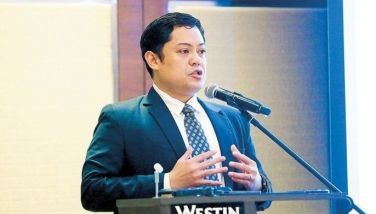Manila Water cuts forex differential rate to 9¢ per cubic meter
March 17, 2006 | 12:00am
Due to the continued appreciation of the peso against the dollar, Ayala-led utility firm Manila Water Co. is reducing its foreign currency differential adjustment (FCOA) from 37 centavos to nine centavos per cubic meter effective April 1, 2006.
Manila Water serves the east zone covering over five million people in the cities of Makati, Pasig, Mandaluyong, Marikina, most parts of Quezon City, the Sta. Ana and San Andres districts of Manila, and residential areas in Pateros, Montalban, Cainta, and Antipolo in Rizal Province.
With the downward adjustment in the FCDA an average household in the east zone of Metro Manila which consumes about 30 cubic meters of water per month will save around P5 in its average monthly water bill.
"The improved outlook for the country, which translated into an appreciation of the Philippine currency, is a welcome development for the company. In our case, the impact is directly felt by our customers through a reduction in their monthly water rates," Manila Water president Antonino T. Aquino said.
The FCDA is a mechanism which allows the concessionaire, in this case Manila Water, to recover its foreign currency losses due to payments of concession loans and foreign denominated borrowings.
Despite a drop in tariff, Aquino said there would be no negative effect on the company’s net profits for the year because the FCDA is merely a pass-through mechanism to account for changes in foreign exchange rate and thus reflects foreign exchange losses or gains.
At the same time, Manila Water announced plans to borrow up to P1 billion as additional funding for its capital investment program. "Borrowing in local currency will enable us to better manage our foreign currency risk exposure, as a way to ease any effect of a future currency fluctuation on our customers," Aquino said.
For this year, the company has earmarked P4.6 billion for the improvement of its facilities, development of new water sources and its expansion in Taguig and Rizal.
Outside the east zone concession, Manila Water is eyeing the potential development of water projects in other provinces, including La Union.
The company earlier announced it is eyeing projects in India, Vietnam and Thailand to further improve its cashflow.
Manila Water is also part of a consortium that is evaluating the viability of taking over the rehabilitation of debt-saddled Maynilad Water Services, its counterpart in the west zone.
Manila Water serves the east zone covering over five million people in the cities of Makati, Pasig, Mandaluyong, Marikina, most parts of Quezon City, the Sta. Ana and San Andres districts of Manila, and residential areas in Pateros, Montalban, Cainta, and Antipolo in Rizal Province.
With the downward adjustment in the FCDA an average household in the east zone of Metro Manila which consumes about 30 cubic meters of water per month will save around P5 in its average monthly water bill.
"The improved outlook for the country, which translated into an appreciation of the Philippine currency, is a welcome development for the company. In our case, the impact is directly felt by our customers through a reduction in their monthly water rates," Manila Water president Antonino T. Aquino said.
The FCDA is a mechanism which allows the concessionaire, in this case Manila Water, to recover its foreign currency losses due to payments of concession loans and foreign denominated borrowings.
Despite a drop in tariff, Aquino said there would be no negative effect on the company’s net profits for the year because the FCDA is merely a pass-through mechanism to account for changes in foreign exchange rate and thus reflects foreign exchange losses or gains.
At the same time, Manila Water announced plans to borrow up to P1 billion as additional funding for its capital investment program. "Borrowing in local currency will enable us to better manage our foreign currency risk exposure, as a way to ease any effect of a future currency fluctuation on our customers," Aquino said.
For this year, the company has earmarked P4.6 billion for the improvement of its facilities, development of new water sources and its expansion in Taguig and Rizal.
Outside the east zone concession, Manila Water is eyeing the potential development of water projects in other provinces, including La Union.
The company earlier announced it is eyeing projects in India, Vietnam and Thailand to further improve its cashflow.
Manila Water is also part of a consortium that is evaluating the viability of taking over the rehabilitation of debt-saddled Maynilad Water Services, its counterpart in the west zone.
BrandSpace Articles
<
>
- Latest
- Trending
Trending
Latest
Trending
Latest
Recommended




























